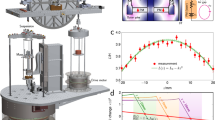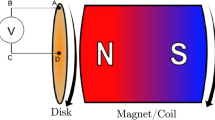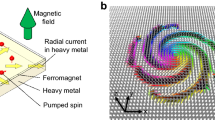Abstract
THE appearance of a paper, by Dr. L. T. More, on the changes in length produced in iron wires by magnetisation (Phil. Mag., October 1895, P. 345, and Physical Review, vol. iii. p. 210), has drawn my attention to a curious divergence of opinion on a fundamental point in magnetism. Dr. More has attempted to analyse the change of length accompanying magnetisation into a “direct action” which “may possibly be due to the orienting of the magnetised particles,” and to “indirect actions.” He adds (p. 224): “These indirect actions are the mechanical stresses created in the rod by the magnetism. The first of these is the tractive force of the magnet and is measured by B2/8π. That this force exists, tending always to contract the rod (italics mine), is seen from the fact that if the magnet is cut in two, the ends are held together.… This effect for high intensities of magnetisation is a large one, and becomes one of the most important factors in the observed changes in length.” The stress referred to by Dr. More is that usually associated with the name of Maxwell (“Electricity and Magnetism,” vol. ii. Arts. 641 et seq. Cf. Ewing, “Magnetic Induction in Iron and other Metals,” § 147).
This is a preview of subscription content, access via your institution
Access options
Subscribe to this journal
Receive 51 print issues and online access
$199.00 per year
only $3.90 per issue
Buy this article
- Purchase on Springer Link
- Instant access to full article PDF
Prices may be subject to local taxes which are calculated during checkout
Similar content being viewed by others
Rights and permissions
About this article
Cite this article
CHREE, C. Changes of Length in Bars and Wires of Magnetic Material Due to Magnetisation. Nature 53, 269–270 (1896). https://doi.org/10.1038/053269b0
Published:
Issue Date:
DOI: https://doi.org/10.1038/053269b0
Comments
By submitting a comment you agree to abide by our Terms and Community Guidelines. If you find something abusive or that does not comply with our terms or guidelines please flag it as inappropriate.



